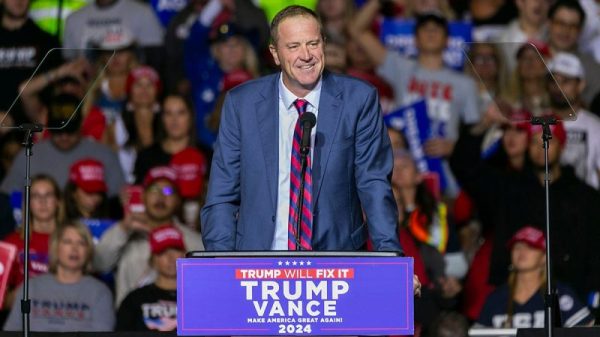In a recent wave of political ads, the Trump campaign has sharpened its focus on immigration policies, particularly targeting Senator Kamala Harris. As the political landscape heats up in the lead up to the upcoming presidential election, campaigns are employing various strategies to sway voters. The new ad released by the Trump campaign takes a critical stance on Harris’ track record and views on immigration, sparking debate and discussion among voters and political commentators.
The ad begins with a stark portrayal of Harris’ stance on immigration, labeling her as an advocate for sanctuary cities and policies that prioritize undocumented immigrants over American citizens. This strategic framing aims to tap into the concerns of voters who prioritize border security and immigration reform. By positioning Harris as a proponent of policies that may be perceived as lenient or unconventional, the ad seeks to build a negative narrative around her immigration platform.
Furthermore, the ad delves into Harris’ past statements and actions regarding immigration, highlighting instances where she expressed views that may be deemed as conflicting or controversial. By selectively curating Harris’ words and actions, the ad attempts to paint a picture of inconsistency and unreliability in her approach to immigration policies. This tactic is common in political advertising, where opponents seek to undermine the credibility and trustworthiness of their rivals.
One notable aspect of the ad is its emotive appeal, evoking feelings of fear and uncertainty by showcasing images of border crossings and law enforcement activity. By tapping into the emotional responses of viewers, the ad attempts to forge a connection between Harris’ immigration policies and broader concerns about safety and national security. This emotional manipulation is a powerful tool in political advertising, as it can sway undecided voters based on their instincts and gut reactions.
Overall, the Trump campaign’s new immigration-focused ad targeting Kamala Harris is a strategic move to shape the narrative around a key policy issue. By leveraging selective information, emotive imagery, and critical framing, the ad aims to position Harris in a negative light and sway voters towards Trump’s immigration platform. As the election approaches, such ads are likely to play a significant role in shaping public opinion and driving voter turnout. It remains to be seen how effective these tactics will be in influencing the outcome of the election and the future direction of immigration policies in the United States.


































